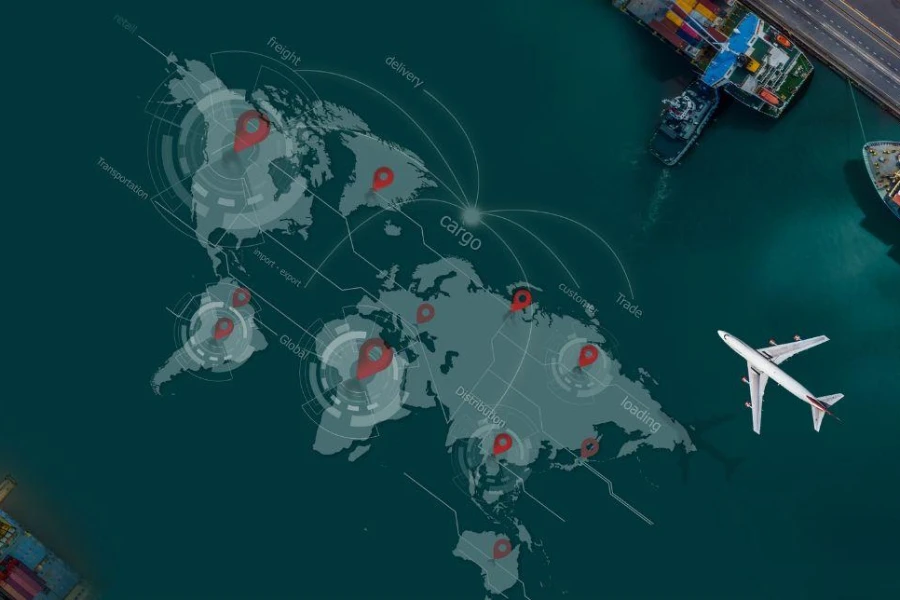The global supply chain represents the backbone of international trade, a complex network that ensures the flow of goods and services across borders seamlessly. In today’s interconnected world, understanding the mechanics behind this vast network is crucial for businesses aiming to compete on the global stage. This article aims to demystify the global supply chain, breaking down its key components, challenges, and strategies for effective management.
Table of Contents:
– What is the global supply chain?
– Key components of a global supply chain
– Challenges facing the global supply chain
– Strategies for effective global supply chain management
– The future of global supply chains
What is the global supply chain?

The global supply chain encompasses a series of interconnected activities designed to produce and deliver products or services to consumers worldwide. It involves a network of suppliers, manufacturers, distributors, and retailers working in unison to ensure that goods move from production to the end consumer efficiently. The globalization of trade has expanded the scope of supply chains, making them more complex but also more capable of meeting the demands of a global market.
At its core, the global supply chain is about coordination and collaboration. Businesses must navigate through various international regulations, cultures, and logistical challenges to maintain a smooth operation. The ability to adapt to changing market conditions and to anticipate disruptions is what sets apart successful global supply chains from the rest.
Understanding the global supply chain is not just about grasping its structure but also recognizing its impact on economies, societies, and the environment. It plays a pivotal role in driving economic growth, creating jobs, and fostering innovation. However, it also poses challenges related to sustainability and ethical practices, which are increasingly coming under scrutiny.
Key components of a global supply chain

The global supply chain is made up of several key components, each playing a critical role in its overall functioning. At the outset, sourcing involves identifying the right suppliers who can provide quality materials at a competitive price. This step is crucial as it sets the foundation for the product quality and cost-effectiveness of the entire operation.
Next, manufacturing and production turn raw materials into finished products. This process must be managed efficiently to meet demand without incurring unnecessary costs. Logistics and transportation then take center stage, ensuring that products are delivered to the right place at the right time. This involves complex coordination of shipping methods, warehousing, and inventory management.
Lastly, customer service and return management are essential for maintaining customer satisfaction and trust. In a global supply chain, the ability to address customer concerns and handle returns effectively can significantly impact a business’s reputation and bottom line.
Challenges facing the global supply chain

Navigating the global supply chain comes with its set of challenges, from geopolitical tensions and trade disputes to natural disasters and pandemics. These disruptions can have a cascading effect, highlighting the need for resilience and flexibility in supply chain operations.
Another significant challenge is the increasing complexity of supply chains. As businesses strive to meet the diverse needs of a global customer base, managing multiple suppliers, regulations, and logistical considerations becomes more daunting. This complexity requires sophisticated technology and expertise to ensure efficiency and compliance.
Sustainability and ethical practices are also pressing concerns. Consumers and regulators are demanding greater transparency and responsibility from businesses, pushing them to adopt sustainable practices and ensure fair labor conditions in their supply chains. Balancing economic goals with these expectations is a delicate task that requires commitment and innovation.
Strategies for effective global supply chain management

To overcome these challenges, businesses must adopt strategic approaches to global supply chain management. One key strategy is diversification of suppliers and markets. By spreading operations across different regions, companies can mitigate risks associated with geopolitical tensions or localized disruptions.
Investing in technology is another crucial strategy. Advanced data analytics, AI, and blockchain can enhance visibility, efficiency, and security across the supply chain. These technologies enable businesses to predict disruptions, optimize operations, and ensure transparency.
Building strong relationships with suppliers and partners is also essential. Collaboration and open communication can lead to more flexible and resilient supply chains, capable of adapting to changes and overcoming obstacles together.
The future of global supply chains

Looking ahead, the global supply chain is set to become even more integrated and technology-driven. The rise of e-commerce and digital platforms is transforming traditional supply chain models, making them more customer-centric and responsive. Sustainability will also be a key focus, with businesses increasingly adopting green practices and technologies to reduce their environmental impact.
Innovation will be the driving force behind the evolution of global supply chains. From autonomous vehicles and drones for delivery to the use of IoT for real-time tracking, the possibilities are endless. As businesses navigate this evolving landscape, staying informed and adaptable will be more important than ever.
Conclusion:
The global supply chain is a complex yet fascinating system that touches every aspect of our lives. From the food we eat to the clothes we wear, it ensures that goods and services are available worldwide. Understanding its intricacies, challenges, and strategies for effective management is crucial for businesses looking to thrive in the global market. As we look to the future, embracing innovation and sustainability will be key to building resilient and efficient global supply chains.



